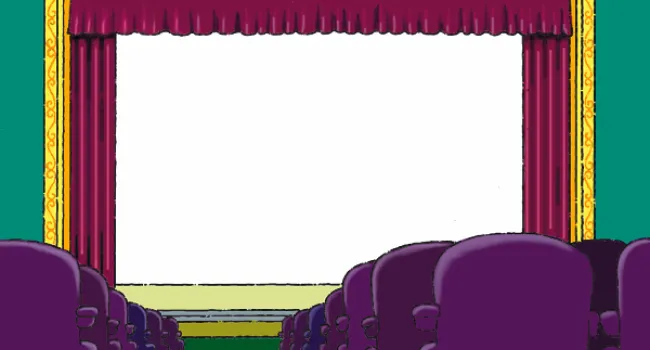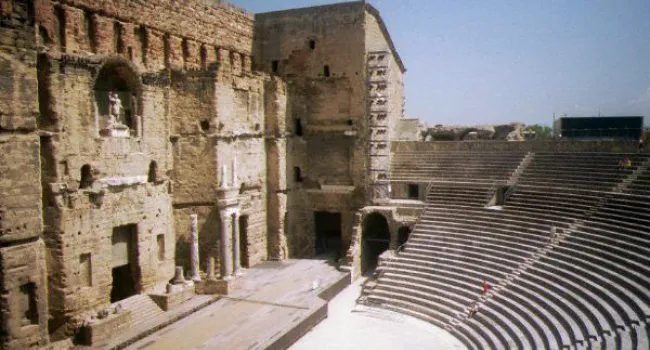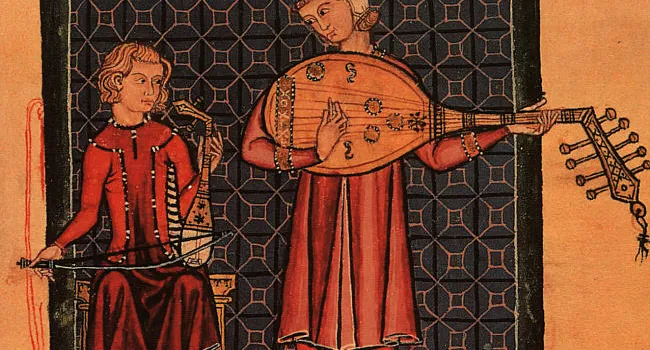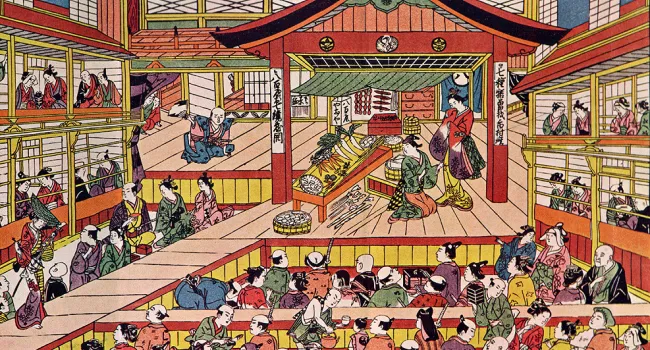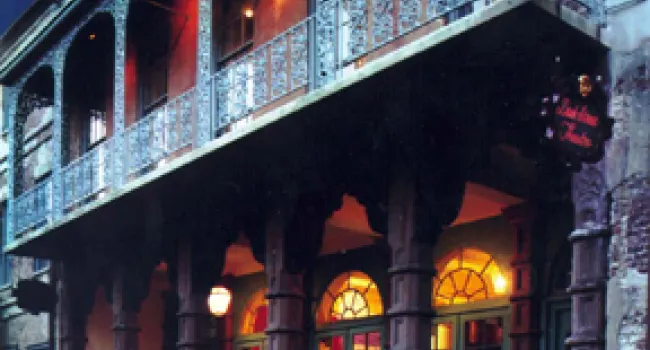In the Renaissance (Re-nais-sance) period, from the fourteenth to the seventeenth centuries, an interest in classical Greek and Roman art, culture and theater returned. Two major theater design traditions were developed at this time in Italy: the proscenium (pro-scen-i-um) arch that frames and divides the stage from the audience and the art of painting cloths as backdrops for scenery.
Another major influence from this region was the commedia dell’ arte (com-med-i-a dell’ art-e’), which means comedy of the profession. This form of theater was an improvised, quick-witted performance by wandering players. They wore masks to portray a regular cast of characters and made up their lines as they went along. The daughters and wives of the players were some of the first women to perform in theater.
In England, Queen Elizabeth I strongly supported the theater. During Elizabethan times, as they are known, the most famous playwright in history began his career. Born in 1564, William Shakespeare was an actor and poet, who wrote plays for his company, the Lord Chamberlain’s Men, to perform. Shakespeare was part owner of the famous Globe Theater (pictured above).
Many of his plays, such as “Romeo and Juliet,” “Hamlet,” and “A Midsummer Night's Dream,” are still studied and performed all over the world today.
